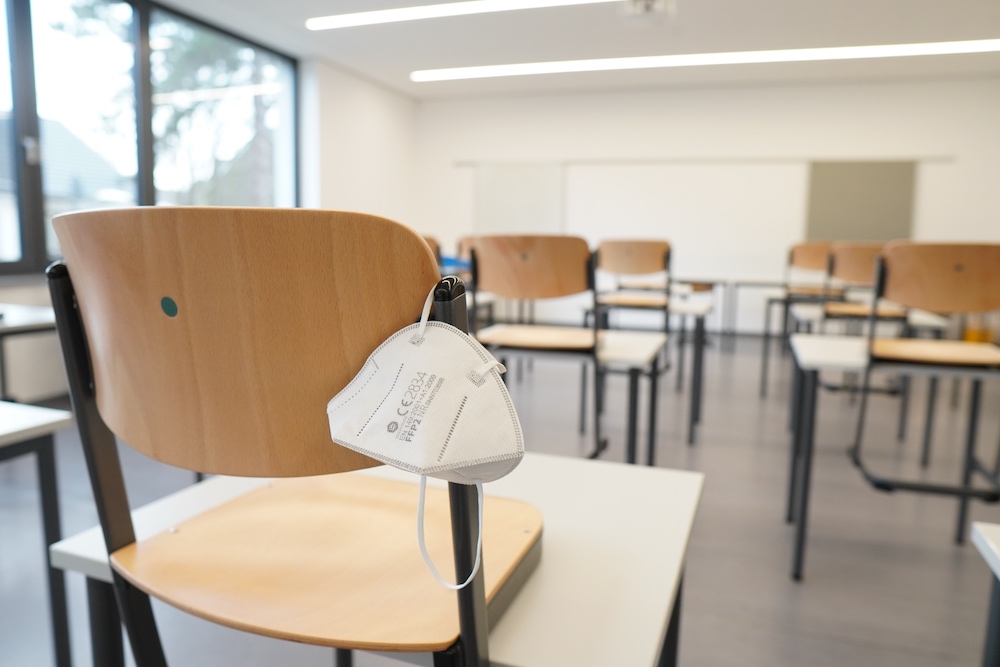Bringing Clinical Simulation & Active Learning Strategies into the Classroom During COVID-19
The COVID-19 pandemic brought many changes to the world, including those necessary at educational institutions. For instance, many educators were forced to convert in-person learning to completely remote in a matter of days or weeks. Clinical simulation has been a mainstay in academia, even prior to the pandemic, and was ultimately thrust into the forefront when COVID-19 hit the United States. Faculty were then challenged to provide meaningful and innovative classroom activities to meet course outcomes. Further, many educational programs, especially healthcare-related programs that are traditionally hands-on, were particularly challenged.
Simulation-based experiences (SBE’s) can be delivered in the classroom, in-person, or remotely, using telecommunication platforms such as Zoom (Zoom Video Communications Inc., 2021). Zoom technology allows for users to broadcast content in real-time or via recording, using multifaceted camera features. This technology also allows for the presenter to “share” their screen with the audience if they so choose.
This technology gained much popularity when programs were forced to go remote. One nursing program in the Southeastern United States, utilized this technology to teach combined fundamentals of nursing and health assessment courses (skills and theory) to novice level nursing learners remotely.
Sponsored Content:
Novice-level nursing learners require learning activities that build foundational knowledge. There is a strong focus on psychomotor skills within beginning-level courses which require learners to spend a considerable amount of time in the lab for hands-on training in addition to learning the concepts during course lectures which are challenging when a course is being taught remotely.
Deliberate practice is a theory that drives the learning in this didactic course as well as the lab component. Deliberate practice follows the belief that learners learn by repetition and direct feedback and redirection of a faculty member or content expert (Ericsson et. al., 1993). Converting to a fully online format poses a unique challenge for the novice level learner as well as course faculty who must find a way to ensure learners achieve course outcomes.
Active learning strategies can be used to bridge the gap of hands-on learning in an online environment. Implementing a variety of active learning strategies such as faculty demonstrating body system assessments on low fidelity manikins in the classroom helped reach learners who were remote. Course faculty utilized Zoom technology using cameras in the classroom to focus on manikins and demonstrate fundamental skills such as vital signs and body system assessments. Faculty in this course provided prereading for body systems with an expectation of understanding prior to the class meeting; therefore, class time was spent on conducting the assessment(s) and discussing potential findings.
During class time, an atmosphere of encouragement was created to invite questions and dialogue from the learners. These learners were encouraged to unmute their microphones and ask questions of the instructor during the demonstration. With the use of PowerPoint slides, potential findings and abnormalities were listed for learners to note. Learners would be expected to demonstrate their assessment skills during small group lab sessions with lab faculty, thus requiring learners to give their full attention and clarify information during class time.
Sponsored Content:
The faculty also presented virtual patient scenarios to aid in the development of assessment skills. Utilizing an online resource that was purchased by learners allowed for an interactive strategy in which learners received immediate feedback as they practiced assessment skills. The faculty also provided an electronic health record for documentation of these assessment findings.
Faculty would present a virtual patient, place learners in break-out rooms via zoom to discuss a plan of care, method of assessment, and potential findings; after approximately 15 to 20 minutes learners were brought back into the main zoom lecture room for discussion of findings. If time was limited, learners could finish this up as homework, outside of class time, and findings would be presented at the next class meeting. These resources were utilized during class time as well as during lab which provided for deliberate practice opportunities for learners with their lab leaders.
Unfolding case studies were also presented in class and brought to life using manikins and carefully structured simulations. An unfolding case study is one in which the case evolves over time in a way that is unpredictable for the learner. Cases may also “unfold” over long periods of time, as learners are able to apply content learned in various courses across the curriculum. These unfolding case studies and clinical simulation activities were structured using true-to-life cases representative of the content being covered.
In unfolding case studies, small learner groups work together to make complex decisions based on various cues built into the scenario. The instructor facilitates by asking probing questions that serve to elucidate learner thought processes. Each case study is designed to guide learners on how to make effective clinical judgments. The learners must recognize cues relevant to the case. These cues could be found through physical assessments, lab tests, and or radiologic studies. They would then analyze these cues to develop and prioritize their nursing interventions.
At the conclusion of each section, an online game-based learning activity was used to further establish content retention. Questions for the activity were developed based on the content covered during the unfolding case studies. This audience response/gaming activity served multiple purposes. In addition to reviewing major points for the learners, this activity was able to identify content areas where learners needed more instruction. When weak areas were identified this content would be immediately revisited by the faculty member.
The benefits of this type of learning activity include reinforcement of content, immediate learner feedback, and a gaming environment that generated learner enthusiasm. Furthermore, this activity can be played both in-class and virtually with no need for modification as learners engage in the activity online using their mobile phones or portable device. The basic version of Kahoot is available to educators free of charge.
Much has been learned since the timely transitions due to the COVID-19 pandemic. Interestingly, outcomes related to active learning strategies have been favorable, despite the challenges. Learner’s report feeling more prepared to make the clinical decisions necessary in their new role as a nurse. Technological advances, along with innovation and creativity, have been pivotal in the success of teaching and learning strategies during these uncertain times.
Future plans include developing more unfolding cases and “choose your own adventure” experiences to be used both in and outside of the classroom; developing screen-based simulations using 360-degree technology to enhance learner engagement; and continued use of virtual patient scenarios and electronic charting in the classroom, lab, and clinical settings. All these strategies will aid in learners’ development of clinical reasoning and clinical judgment.
Learn More About Clinical Simulation COVID-19 Resources
Dr. Amy Curtis has over 17 years of combined experience in nursing and nursing education. She earned her BSN from Auburn University in 2003 and spent much of her nursing career working in orthopedics. She earned her MSN in 2011 from Auburn University and Auburn University Montgomery’s Joint MSN Program. She also earned her College and University Teaching Graduate Certificate from Auburn University in 2011. Dr. Curtis earned her PhD in Adult Education from Auburn University in 2016. She is an Assistant Clinical Professor at Auburn University School of Nursing where she coordinates the Fundamentals of Nursing and Health Assessment courses for junior-level nursing students. She also teaches in both the MSN and RN to BSN Graduate Programs at Auburn University. She is a Certified Healthcare Simulation Educator (CHSE) with over 9 years of simulation experience.
Sponsored Content:
















